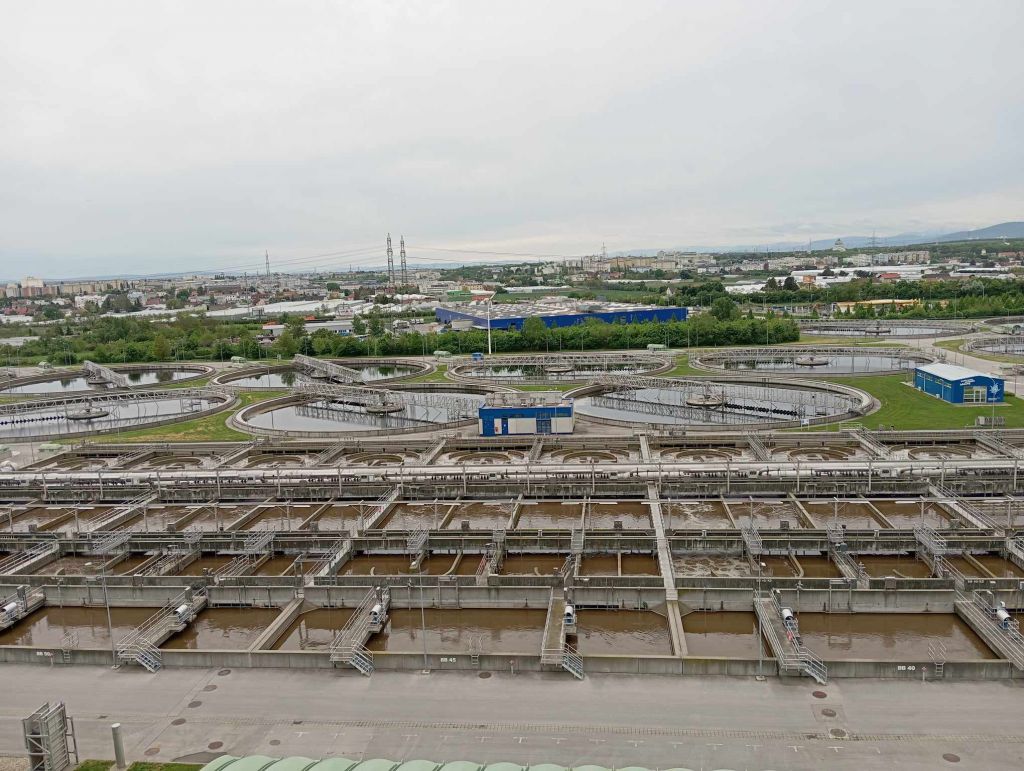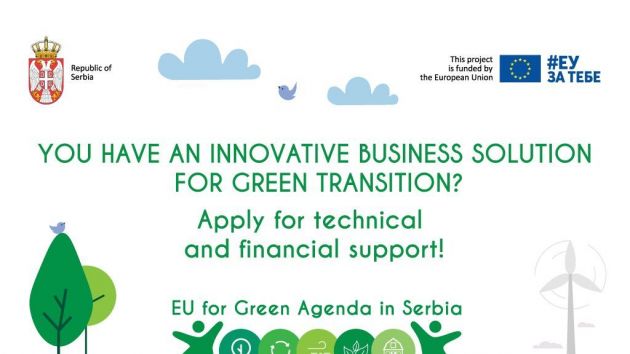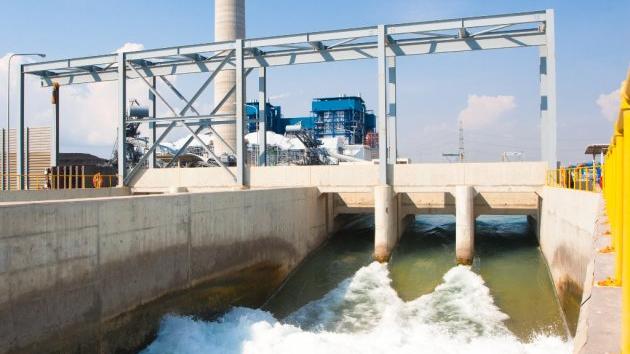Viennese waste water treatment facility works on nature-based model and supplies itself with green energy – Clean water poured into the Danube, when will Belgrade start doing the same?
Source: eKapija
 Monday, 29.04.2024.
Monday, 29.04.2024.
 12:31
12:31
 Monday, 29.04.2024.
Monday, 29.04.2024.
 12:31
12:31
The waste water treatment facility in Vienna (Photo: Ivana Žikić)

The factory covers an area of 490,000 m2, which is an area larger than the Vatican, and it is run by ebswien, a city-owned Viennese company.
– After the mechanical cleaning of the waste waters, the filtering is done using a nature-based model. To clarify, in the two phases of biological treatment, polluters such as carbon, nitrogen and phosphorus are removed – said Karl Wögerer of ebswien.
Supplying themselves with clean energy
It takes a large amount of energy to process that amount of water. The factory consumes 60 GWh a year, which is equivalent to the consumption of 25,000 Viennese households.
– Fifteen years ago, a transformation process was initiated with the aim of having the factory supply itself with clean energy. Since 2020, ebswien has been producing more green energy from the waste gas that is generated in six large digestors than it needs in order to work – says Wögerer.
Where are Serbia and Belgrade?
At the level of the European Union, as much as 80% of waste waters is treated, which is at the level of the global average, whereas Serbia is far below that, at only 14.7%. Belgrade doesn’t have a single waste water treatment facility and all the sewage is poured into the Sava and the Danube.
In January 2022, the Government of Serbia confirmed a loan of EUR 203.7 million secured at the Chinese state company China Export & Credit Insurance Corporation. Those funds are meant for the financing of the first phase of the project of collection and treatment of waste waters of the central sewer system of the City of Belgrade.
The agreement on cooperation and the framework agreement for the project of collection and treatment of waste waters within the central sewerage system of the City of Belgrade was signed in 2020. The then minister of construction, transport and infrastructure of Serbia, Zorana Mihajlovic, signed the agreement on cooperation and the framework agreement for the project of collection and treatment of waste waters within the central sewerage system of the City of Belgrade with the director of Representative Office of China Machinery Engineering Corporation (CMEC) in Serbia, Li Xueqiang, and the director of PUC "Belgrade Waterworks and Sewerage", Dragan Djordjevic.
Mihajlovic pointed out on that occasion that 190 million cubic meters of wastewater were poured into the Sava and the Danube, which is comparable to 60 thousand Olympic swimming pools or 19 million water tanks.
In the process of accession to the EU, Serbia also has to fulfill the requirements from Chapter 27 which pertain to waste water treatment among other things.
– The Belgrade issue will be solved through several facilities that it needs to have. One of them, the biggest one, is Veliko selo, which is located in the municipality of Palilula, and for which the project-technical documentation is already being prepared and where was can already see what the facility is supposed to look like. It will be one of the biggest facilities, which will also feature the sludge drying treatment, but what’s important is that it will be a place where sludge will be incinerated, producing energy. This is all in the technical documentation phase, where we can already see the amount of funds that will be needed for one such big facility. It exceeds the amount of approximately EUR 700 million – Sandra Dokic, the state secretary at the Ministry of Environmental Protection, said for RTS recently.
(Photo: Ivana Žikić)

Waste waters also a resource for medical data
With the beginning of the coronavirus pandemic, the data of the Viennese waste water treatment plant were useful to the decision-makers as a medical resource as well. Soon after the pandemic was declared, the CSI Wastewater project was launched, whereby the data on the percentage of those infected with the virus from the waste waters proved to be important for an early detection of the presence of the virus among the populace.
The data of this company, obtained from the waste waters, arrived before the official number of the registered cases in the health institutions, which was significant in those circumstances.
The article was created within the “Pulse of Europe” project, which is financed by the European Union in Serbia.
I. Zikic
Companies:
 Grad Beograd
Grad Beograd
 Predstavništvo Preduzeća China Machinery Engineering Corporation Beograd
Predstavništvo Preduzeća China Machinery Engineering Corporation Beograd
 JKP Beogradski vodovod i kanalizacija Beograd
JKP Beogradski vodovod i kanalizacija Beograd
 Ministarstvo zaštite životne sredine Republike Srbije
Ministarstvo zaštite životne sredine Republike Srbije
Tags:
ebswien
China Export and Credit Insurance Corporation
City of Belgrade
China Machinery Engineering Corporation
CMEC
PUC Belgrade Waterworks and Sewerage
Ministry of Environmental Protection
Karl Wogerer
Zorana Mihajlović
Li Xueqiang
Dragan Đorđević
Sandra Dokić
Clean Serbia
waste water treatment
Belgrade sewer problem
waste water treatment facilities
investment plan Serbia 2025
construction of factory for treatment of waste waters in Veliko Selo
Veliko Selo
Comments
Your comment
Most Important News
Full information is available only to commercial users-subscribers and it is necessary to log in.
Follow the news, tenders, grants, legal regulations and reports on our portal.
Registracija na eKapiji vam omogućava pristup potpunim informacijama i dnevnom biltenu
Naš dnevni ekonomski bilten će stizati na vašu mejl adresu krajem svakog radnog dana. Bilteni su personalizovani prema interesovanjima svakog korisnika zasebno,
uz konsultacije sa našim ekspertima.


 Izdanje Srbija
Izdanje Srbija Serbische Ausgabe
Serbische Ausgabe Izdanje BiH
Izdanje BiH Izdanje Crna Gora
Izdanje Crna Gora


 News
News










